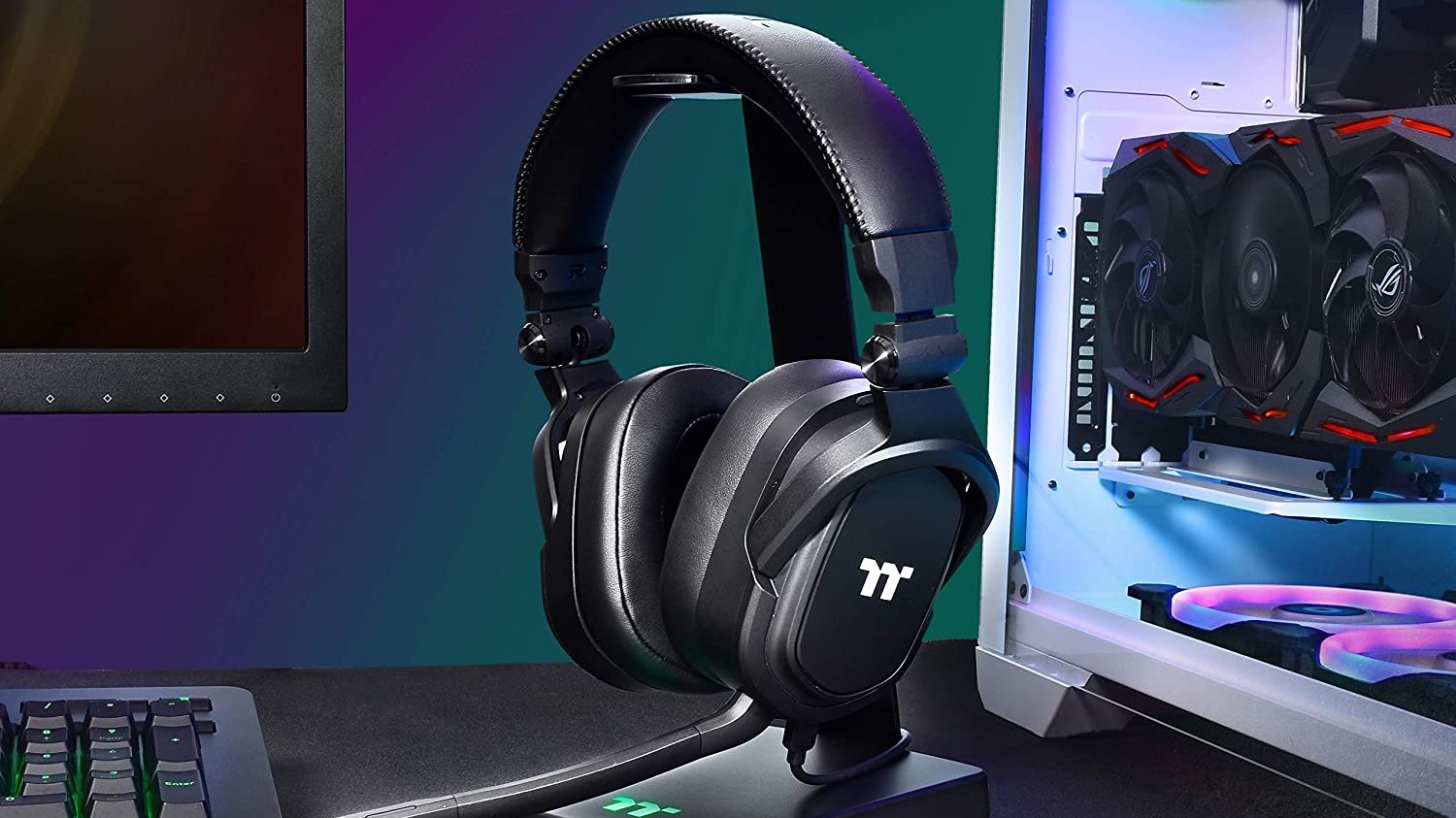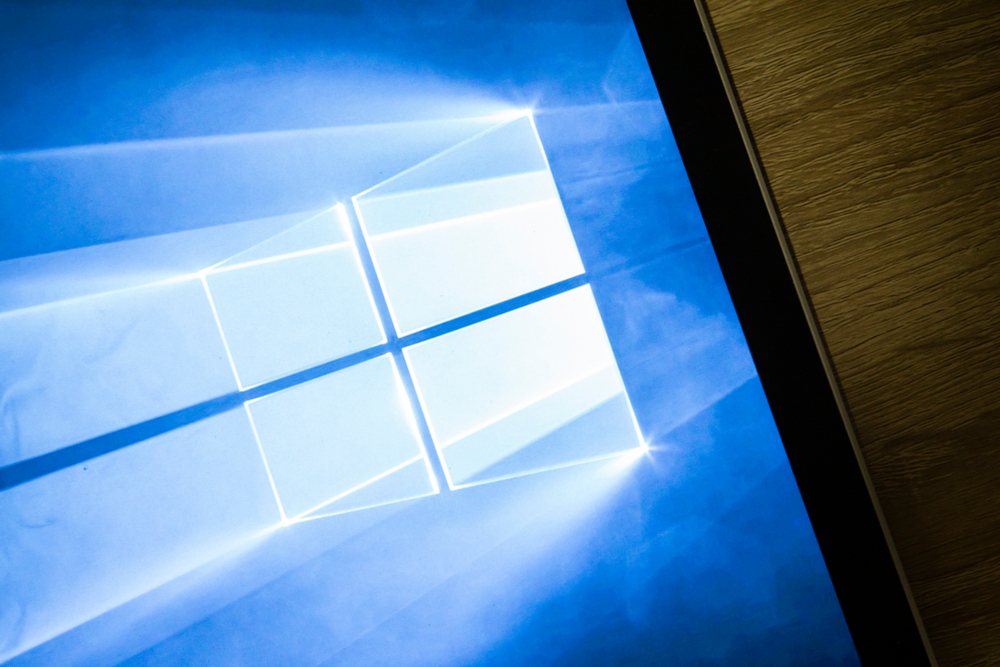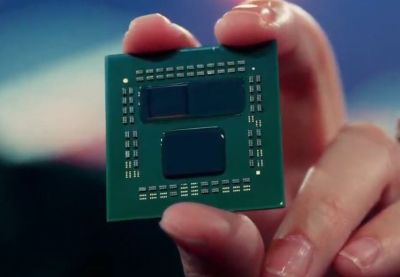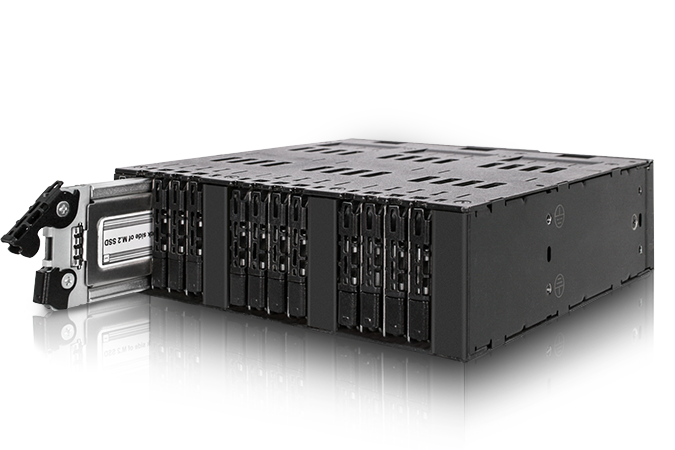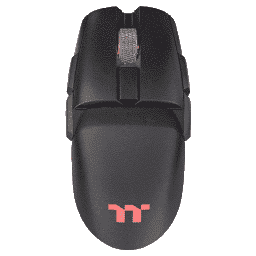Our Verdict
Thermaltake’s Argent H5 Stereo boasts solid build quality, clear sound and a no-nonsense approach that will either meet your needs or leave you wanting more.
For
- + Very comfortable, snug fit
- + Affordable
- + Excellent sound out of the box
- + Attractive, minimalist design
Against
- – 3.5mm only
- – Mic doesn’t filter out background noise well
- – No way to adjust mic volume levels on the fly
- – Hi-res performance could be better
The Thermaltake Argent H5 Stereo is a no-frills headset aimed squarely at gamers on a budget who want to just plug in and play instead of spending time tweaking settings. It looks to compete with the best gaming headsets with a detachable 3.5mm cabling and a detachable mic for easy portability. With an MSRP of $65, the Argent H5 is also an affordable way to experience hi-res audio with great speakers and an impressively wide frequency response.
The Argent H5 Stereo’s sleek, minimalist, stealthy aesthetic does a great job of communicating a commitment to simplicity, and these cans are also very comfortable for long gaming sessions. The question, then, is whether or not this alone is enough to satisfy your needs.
Thermaltake Argent H5 Stereo Specs
| Driver Type | 50mm neodymium |
| Impedance | 32 Ohms |
| Frequency Response | Speakers: 20 Hz – 40 KHz |
| Mic: 100 Hz – 10 KHz | |
| Microphone Type | Bidirectional, detachable |
| Connectivity Options | 3.5mm (single TRRS and split TRS) |
| Cables | 6 feet (2m) 3.5mm cable |
| Weight (with mic) | 0.8 pounds (370g) |
| Lighting | None |
| Software | none |
Design and Comfort
The Thermaltake Argent H5 Stereo is fairly large in size and decked out in sleek, matte black. It’s a stealthy pair of cans, save for the Thermaltake logo in white on the outside of each earcup. The metal frame is stained a matching black, and the leatherette headband shows off the stitching, where it meets the memory foam padding underneath. The detachable mic matches the stark black finish of the rest of the unit, completing a minimalist overall look that will be at home in a wide variety of gaming setups and won’t look out of place in a professional setting.
The cabling is, likewise, very simple. A single cable that houses the headset controls and ends in a single 3.5mm TRRS plug attaches to the headset via a mini USB connector. Thermaltake also includes an adapter that splits into two 3.5mm TRS connectors for devices that don’t support audio input and output through a single TRRS jack. The controls consist of a single volume wheel and a switch that turns the microphone on and off.
Despite its imposing appearance, the Argent H5 may weigh less than you think at just 0.8 pound. There are lighter wired cans in this price range, and I have a couple of them on hand. The HyperX Cloud Core + 7.1 is 0.7 pound, and SteelSeries Arctis 1 Wireless is 0.6 pound, but the Argent H5’s weight still allows it to be comfortable to wear for long periods of time. The earcups swivel, letting you rest the headset on your neck when not actively in use. Adjustments to the headband are easy to make too, as the Argent H5 employs the industry standard push/pull mechanism.
The headband and the earcups both feature soft memory foam padding, with the latter offering just the right amount of depth to ensure that your ears are cradled but not crushed against the drivers. Ultimately, the Argent H5 has a tight, comfortable fit. It took minimal adjustment to get it to sit just right on my head, and its grip is firm but not suffocating. The Argent H5’s mic also features a flexible boom arm that’s easy to bend into the optimal position.
I came away from my time with the Argent H5 impressed by how comfortable it was for long gaming sessions. Simplicity seems to be the word used most often during the Argent H5’s design process, and this yielded good results from a comfort and useability standpoint.
It’s unfortunate, however, that Thermaltake opted for 3.5mm connectivity alone. While this does cut down on the amount of cables and adapters that have to be used with the headset, it also limits the overall utility of the device. It would be nice to also have USB connectivity, considering most phones have dropped the 3.5mm headphone jack entirely and gamers with a full sound system hooked up to their PCs will need to unplug some cables to be able to use the headset with the mic if their PC doesn’t support audio input and output via a single 3.5mm cable.
Audio Performance
The Argent H5 boasts oversized 50mm drivers that support hi-res audio with an impressively wide frequency response of 20 – 40,000 Hz. For comparison, HyperX’s Cloud Core is specced for 15 – 25,000 Hz, and SteelSeries’ Arctis 1 Wireless for 20 – 20,000 Hz.
For testing purposes, I loaded up 24bit .WAV (I also tested with some of my own mixdowns that were exported as 32bit .WAV files at 96K) and .FLAC files with sample rates of 96K and 192K and listened side by side using both the Argent H5 Stereo and the Steelseries Arctis 1 Wireless, which doesn’t support hi-res audio. I also did side-by-side comparisons with in-game audio and movies. I immediately noticed a much clearer, brighter frequency response. The Argent H5 definitely makes the jump to hi-res audio noticeable, especially if you’ve never experienced that type of audio before.
But when it came to other, pricier hi-res headsets, the Argent H5 Stereo couldn’t quite compete. Hi-res performance wasn’t in the same league as the HyperX Cloud Mix ($197 as of writing) or Asus ROG Theta 7.1 ($290 as of writing) in terms of richness and fullness of tone. And it can’t compete with the Asus ROG Delta S, our favorite hi-res gaming headset, which is more beefed out with a Quad DAC and MQA renderer. That said, the Argent H5 Stereo still sounds markedly cleaner than many headsets in its price range.
Compared to many gaming headsets, the Argent H5’s audio is very well-balanced, lacking the overwhelming bass that is de rigueur in the field. There’s a tightness to the bass response that enhances clarity, alongside a well-defined midrange and clean treble frequencies. The overall frequency response is natural and flat, with good separation between lows, mids and highs that allows audio mixes to sound as they were intended. The drivers do a great job of retaining clarity when they are pushed. Maxing out the volume didn’t produce any notable distortion, and these cans get quite loud.
Gaming audio gets high marks. The flat default EQ curve of the Argent H5 Stereo made sure that details weren’t lost in frantic firefights in FPS titles, like Doom Eternal and CS:GO, while more claustrophobic aural experiences, like Outlast, dripped with menacing atmosphere. True to its namesake, this headset does not offer virtual surround sound natively.
If you insist on surround sound, you’d have to enable Windows Sonic or some other third-party software. While the Argent H5 Stereo does play nice with Windows Sonic, thanks to it being outfitted with speakers that are up to the task, gamers who focus on competitive play may balk at not having native positional audio out of the box.
Music, meanwhile, pops through these speakers with excellent clarity, even at high volumes. The Argent H5 stereo rendered dense material, like Opeth’s Blackwater Park album, and more sparse, punchy mixes, like Snoop Dogg’s Doggystyle, equally well . At no point during my testing did low end overwhelm the mix, which can be a problem with gaming-grade headphones.
Movies likewise played well over the Argent H5 Stereo. The Battle of Helm’s Deep in Lord of the Rings: The Two Towers Helm’s sounded thunderous without sacrificing clarity, and the sparse, subtle and eerie mix of The Witch shined.
The overall audio performance of the Argent H5 Stereo is impressive and with no way to tweak it natively, that’s a good thing. Gamers who like to adjust audio settings, however, may be turned off by the lack of options.
Microphone
The Argent H5 Stereo’s bi-directional mic is serviceable but not great. The frequency response is a respectable 100 – 10,000 Hz, cutting out boomy lows and shrill highs. But the mic doesn’t do a very good job of filtering out ambient noise. During gameplay and test recordings using OBS, the sound of my air conditioner was clearly audible, despite it being on the far opposite side of my room. Keyboard chatter was much louder than it should be too.
Additionally, the mic level by default is on the quiet side — about 3-5dB short of where I want it to be, based on my measurements of other headset mics I have on-hand in OBS software. Because of this, my teammates in competitive titles had trouble hearing me. Unfortunately, there’s no way to adjust the mic level on the headset itself. The inline controls only function as a means to adjust the headphone volume and turn the mic on and off. Adjusting the mic volume would require you to play with settings in Windows or the audio software supplied by your laptop or motherboard vendor.
Features and Software
Unlike many gaming headsets today, there’s no software for the Argent H5 Stereo. This is great for gamers who just want to plug in a headset without installing software to adjust settings. Most importantly, by default, the headset’s audio is mostly good enough to not require any further tweaking. This does cut both ways, however.
The mic volume is not adjustable via the inline controls and will require third-party software to manipulate. The mic itself is also unremarkable – clear enough to prevent complaints but not good at filtering out room noise.
Bottom Line
Thermaltake’s Argent H5 Stereo is a solidly built, attractive and great sounding headset that hits the mark when it comes to simplicity and ease of use. It also scores highly when it comes to comfort. These cans provide ample padding and have a snug fit that is free of wobble without feeling constrictive. The Argent H5 Stereo retails for only $65, so it’s also a great value.
Unfortunately, the minimalist approach the Argent H5 Stereo exemplifies also means sacrifices. Connectivity is limited to either a single 3.5mm TRRS or dual, split 3.5mm TRS plugs. Of course, many smartphones have ditched 3.5mm, and it’ll be an annoyance if your system’s 3.5mm jacks are already taken by your 5.1 setup. Without an adapter, you’d have to unplug your external audio system to use the headset.
And tweakers will want to look elsewhere, as there’s no native software for the headset. If you want more control over EQ and mic levels in the same price range, consider the SteelSeries Arctis 1 Wireless or the HyperX Cloud Core instead, which also offer more connectivity options. But you’ll have to forego hi-res audio.
The Argent H5 Stereo’s hi-res abilities make it a nice introduction for those new to the format, but for those serious about hi-res, it’s worth investing in something like the Asus ROG Delta S or the more affordable HyperX Cloud Mix.
But if you’re looking for a gaming headset that looks and sounds great out of the box for a very fair price, the Argent H5 Stereo is easy to recommend.
